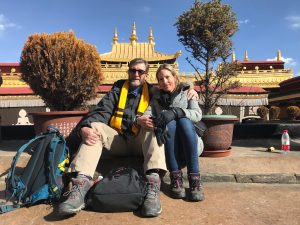
We headed to Tibet at the end of January for a friends 50th birthday. One of the highlights of the trip was taking the overnight train from Xining in China, across the Tibetan plateau and into Lhasa. This is the highest train ride in the world and reaches an altitude of 5600m above sea level, which is slightly higher than Everest base camp. Lucky for us we were not hiking and had oxygen being pumped into our train compartments to help us breathe. Watching the scenery unfold from the warmth of our train carriage, I began to wonder about the availability of fresh vegetables in Tibet. This is a country where the Yak is king. Yep, that’s right, Yak. It’s a big furry animal similar to a cow, but looks fierce and has lots more hair. In Tibet, Yak is the preferred source of meat (probably because it’s so cold normal cows would die of hyperthermia before they got old enough to be eaten!). Not only do they like Yak meat in Tibet, they drink Yaks milk, eat Yak cheese, use yak butter in their cooking and to keep their candles lit. I don’t think there is any part of the Yak that isn’t used in some form. Yak droppings are even dried and used as fuel for fires, as there is a very limited supply of trees in Tibet. Now, that’s all very well if you are a meat eater, but as a vegetarian I was a bit concerned.
My consolation was that Tibet is a Buddhist country and some Buddhists are vegetarian (not all as I found out), so surely there would be some good veggie meals to try.
The countryside we were seeing from the train window looked barren and inhospitable (unless you were a Yak of course), I couldn’t imagine anything growing out there. To be fair, we were in the middle of winter and as we got higher in the Tibetan plateau, a thick layer of snow covered the ground and surrounding mountains. At this altitude there are no trees, very little animal life and just the occasional local village that appeared deserted, which makes sense, as unless you were a Yak, you would no doubt be inside sheltering from the bitter cold.
We spent 22 hours on the train in our “First class” carriage where we ate food bought from home. The reviews of the food on offer during our journey weren’t good and the smells from the dining car only confirmed the reviews were right. We managed to throw together a lovely birthday dinner with some hummus, carrot sticks, pots of noodles, fruit, nuts and other assorted, relatively healthy snacks. For dessert we even had some birthday cake flavoured muesli bars. It was a 50th birthday feast.
When we arrived at Lhasa, we were ready to eat some real food and so headed to a local restaurant recommended by our guide.
I was surprised and pleased to find the menu had quite a variety of vegetable dishes including a whole Indian section with some delicious curries. After doing a bit of research I found out that if I had visited Tibet a few decades ago, I would have struggled to find much in the way of fresh produce. Any vegetables that did make it to Lhasa came from China and consisted of turnips, potatoes and Chinese cabbage. Fruit was almost non-existent. The staple food for the locals back then was meat and highland barley.
In recent years the implementation of Greenhouse’s has made it possible to grow fruit and vegetable’s on the unforgiving Tibetan plateau. Organisations have been established in some vegetable growing bases in Tibet in order to oversee the production and sales of vegetables, making them more accessible and more moderately priced.
This was all very good news for me and meant that eating while in Tibet became a culinary delight of local and Indian vegetarian dishes. My particular favourite were the Momo’s, which are similar to a Japanese Gyozo and come either steamed or fried, delicious. They also had a great eggplant dish that was incredibly tasty although I have no idea what was in the sauce…perhaps its better that way!
Now if we had gone to some of the fancy hotels, we would have been guaranteed a range of western foods so it was never an issue that I would starve for the 5 days we were in Lhasa. However, it was great to be able to eat in local restaurants, try the local dishes and still manage to eat relatively healthy. I always carry a selection of nuts, bars and tea bags with me when I’m traveling, just in case of emergencies.
I also always throw in my exercise gear so I am prepared just in case an opportunity presents itself to get out for a run. While this didn’t happen, (which i was secretly happy about as it was freezing) we did lots of walking and climbed thousands of steps as every monastery and palace in Tibet is built on the top of a very steep hill! Lhasa sits at an altitude of 3600m above sea level so while we were walking on flat ground I didn’t really notice the thinner air, however as soon as we started up stairs I was puffing and panting like I had run a marathon. I figured this would have a good training effect on me once we were back at sea level.
It was a great trip and I really enjoyed learning about another culture, especially one I knew so little about. While I am not a convert to Yak meat or dairy products, I admire how the Tibetans survive through such a cold, barren winter by using what is available to them. As with many countries the “local” culture is changing rapidly and I’m glad I visited Tibet now, before it loses what makes it so special and it becomes indistinguishable from any other big city.
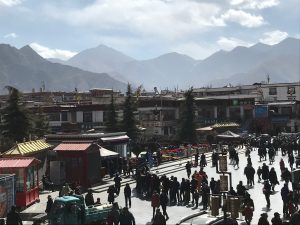
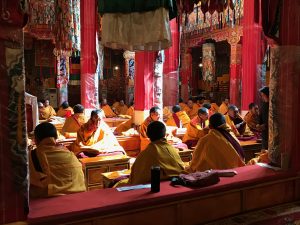
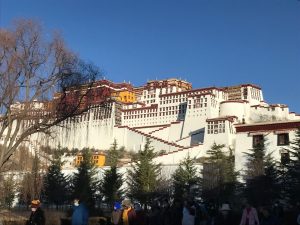


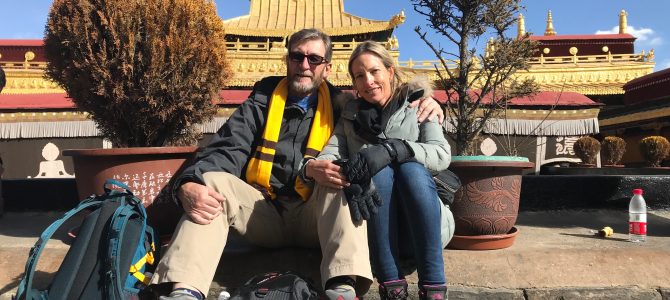
Please, please, please, start writing for some magazines. Your story-telling is absolutely wonderful 🙂
Thanks Bill. Im not sure what magazines would have me, but its an interesting thought. Im just glad you enjoy reading my posts. xx
Dear Karen
This was a wonderful piece of writing and I am about to pass it on to some of my friends. I would not wish to visit Tibet in the snow, however, loved living vicariously through you.
I totally endorse the comments about writing for magazines. Please try Women’s Weekly and Travellers Guide for a start
Love you lots, thanks for including me
Maureen
Dear Maureen, Thanks for you lovely comments. Im so glad you enjoyed the blog. For someone who doesn’t like the cold i seem to be have been a lot of countries this year where it is snowing. We are off to Lijiang in China tomorrow and it is meant to snow there too, which for this time of year is very unusual. I will let you know how that run goes. x
Great story Karen & beautiful photos! What an amazing place to visit! It’s going on my bucket list! Momo’s Were my favourite in Nepal also 😊
Hey Kylie, anywhere with Momo’s has to be good! You would love it. xx